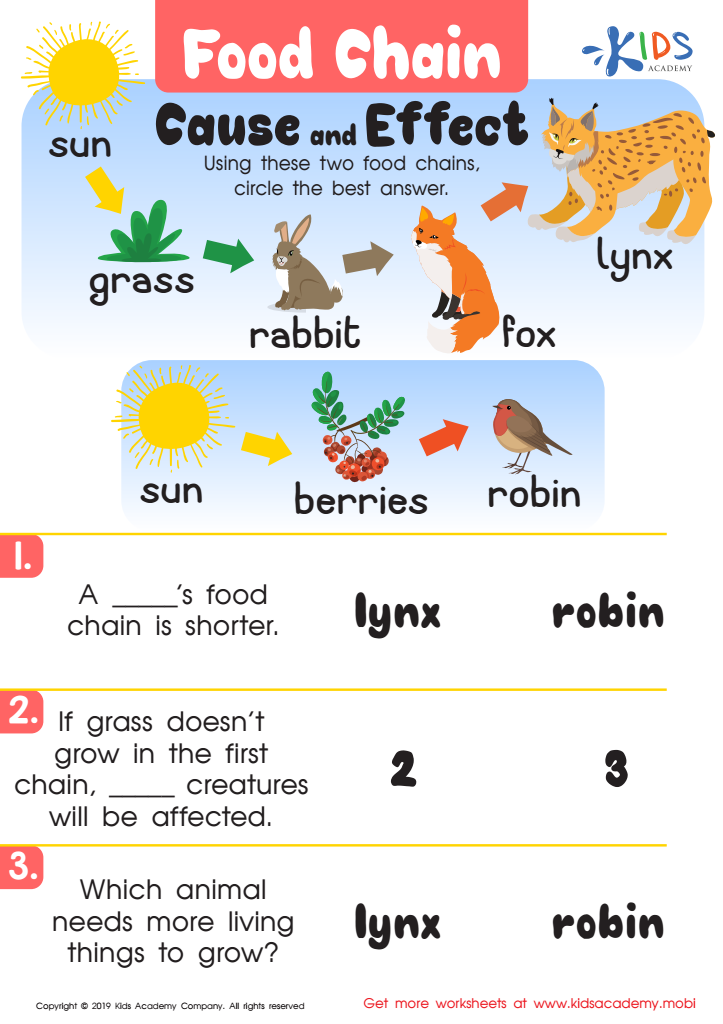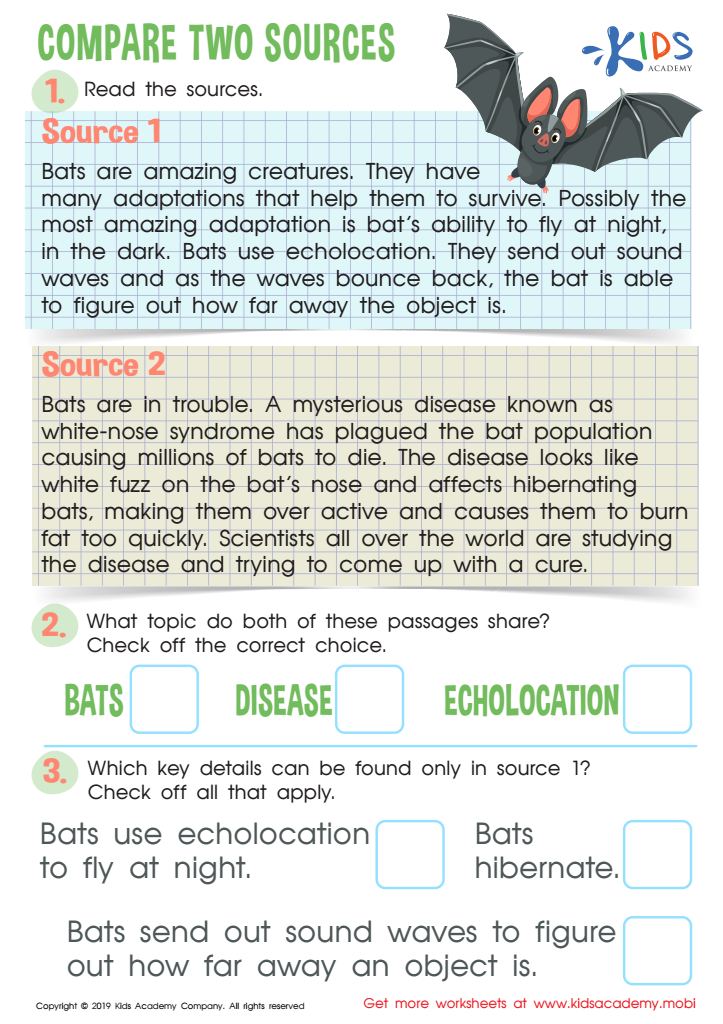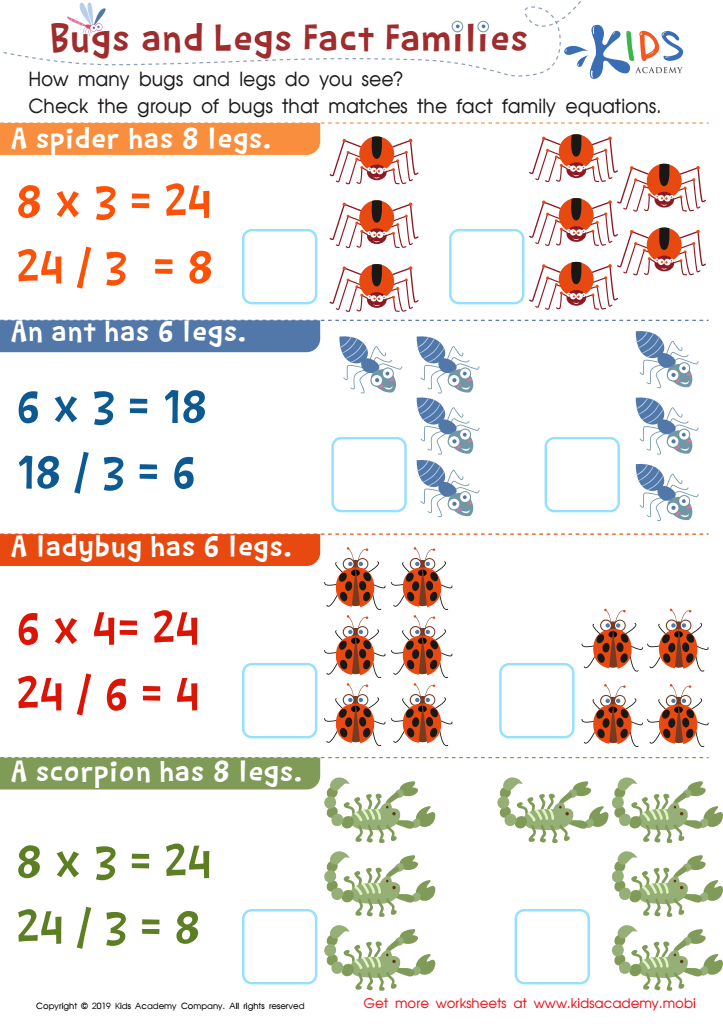Normal Plants and Animals Worksheets for Ages 6-9 - Page 5
99 filtered results
-
From - To


Food Chain Cause Worksheet


Compare Two Sources Worksheet


Bugs and Legs Fact Families Worksheet
Parents and teachers should care about normal plants and animals for children aged 6-9 because these foundational concepts shape young learners' understanding of the environment and foster critical thinking skills. At this age, children are naturally curious, and introducing them to the diversity of plants and animals cultivates their appreciation for nature and promotes environmental stewardship.
Learning about normal plants and animals also supports important developmental areas. It enhances observational skills and encourages scientific inquiry, as children learn to explore, classify, and understand relationships within ecosystems. Engaging with nature helps develop creativity and imagination, enabling children to create stories, art, or even projects involving plants and animals.
Furthermore, these lessons often promote wellness, balance, and mindfulness by encouraging outdoor exploration, which can foster physical activity and reduce stress. Understanding plants and animals also provides essential knowledge about the food chain, sustainability, and biodiversity, which are crucial in our increasingly industrialized world.
By fostering this appreciation for the natural world, parents and teachers equip children with knowledge and values that promote respect for life and active participation in conservation efforts, ultimately preparing them to become responsible global citizens in the future.
 Assign to My Students
Assign to My Students














